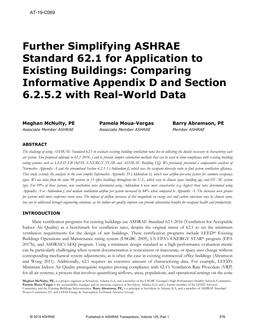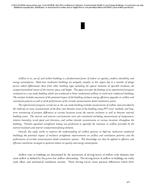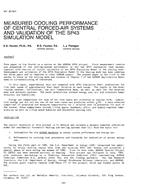The paper represents the second part of a comprehensive study on modeling heat transfer in metal building roof insulation assemblies containing fiberglass insulation. Part 1 described the development and experimental validation of a comprehensive three-dimensional mathematical model for heat transfer (and air flow where applicable) in metal building roof insulation assemblies. The model was used to calculate U-factors for several standing seam roof (SSR) and throughfastened roof (TFR) assemblies assuming the insulation drapes between the purlins to be parabolic. The second part of the work used the results from the model described in part 1 to develop a relatively simple approach to predict the overall heat transfer coefficient (U-factor) of insulated metal building roof insulation assemblies. It is shown that the U-factors obtained using the numerical model may be correlated, to a fairly high degree (R2 = 0.998), to an overall or system thermal resistance parameter, Rinsul-sys as shown below.
1/U = 0.8672 Rinsul-sys + 1.132
In the above equation, U is in Btu/ft2·h·°F and R is in ft2·h·°F/Btu. 1 Btu/ft2·h·°F = 5.6782 W/m2·K and 1 ft2·h·°F/Btu = 0.17611 m2·K/W.
The parameter Rinsul-sys is calculated by combining three thermal resistances operating in parallel. Two of these resistances of equal value correspond to the insulation drapes on either side of the purlin and the one in the middle represents the thermal resistance of insulation over the purlin. An analytical expression for the R-value of the parabolic insulation drape is derived. The approach developed in this paper greatly enhances our ability to predict U-factors for metal building roof assemblies.
Units: Dual
Citation: ASHRAE Transactions, Vol. 116, pt. 1, Orlando 2010
Product Details
- Published:
- 2010
- Number of Pages:
- 8
- File Size:
- 1 file , 690 KB
- Product Code(s):
- D-OR-10-018


